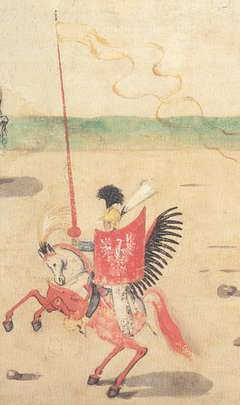
Battles and Campaigns
|
|
Swedish wars 1600-1609 1600 Operations
In the middle of April 1600, in preparation for a conflict over Inflanty, the Sejm earmarked funds for a Polish-Lithuanian expedition comprising some 2,400 mercenaries assisted by local forces of around 2,000. The forces were to be led by the chief of the Weden province, Jerzy (George) Farensbach. Before further Commonwealth forces could arrive the Swedes began offensive operations. Aware of the weak Polish- Lithuanian forces, Duke Charles decided to move quickly. With the main army of some 10,000 he left Rewel for Parnawa (Parna) and sent Pera Stolpeg's force of 4,000 at Narwa in the direction of Dopart to Lais (Laiuse). Charles felt the major port of Parnawa would be an excellent base of operations in Livonia and its capture would open roads to Felin (Viljandi), Salis and then Riga. In the middle of September Farensbach garrisoned various forts and castles and with 750 infantry and 2,000 cavalry he placed himself at Rancen. Parnawa was besieged on 17th September and eleven days after the heavy artillery began the port surrendered (on the 17th October). Then on the 25th October the Swedish army moved for Felin, shielded from the south by a force of 1,500. In the night of 29th/30th October the shielding force was caught near Karkus by the traveling Farensbach, with 1,200 horse, and destroyed. With the onset of winter the rivers and marshes froze solid and Duke Charles recommenced his operations. At the end of December with 7,000 men and 80 cannon he attacked Dorpat. While on 5th Jan 1601 3,000 men under Bengtsson moved for Wolmar (Valmiera) - Kies (Cesis). On 7th January 700 horse under Maciej Dembinski defeated the Swedes near Kies, checking their advance. Soon however the unpaid Polish-Lithuanian forces trickled home. Dopart besieged on 2nd January capitulated four days later. On the 10th February Wolmar was taken and seven days later Kies. Charles felt too weak to directly besiege the newly fortified town of Riga so he decided decided to capture Kokenhauzen which guarded the shortest route through Wilkomierz to Kowno and Wilno. It was also the most likely route of any retaliatory Polish-Lithuanian force. On 10th March Karl Karlsson, son of Duke Charles, blockaded the town. The siege proper did not begin until 28th March with the arrival of Charles and the siege artillery train. The Swedes managed to take the town but the castle withstood four attacks, being well prepared for defence. Discouraged by the initial failure Duke Charles prepared for a blockade of the castle in order to starve it into surrender. He placed 2,600 men within the town and with his main forces he moved to Erlaa some 30 km to the north. In mid April Charles entrusted command to Gyllenhjelm and returned to Rewel (Talinn). |
|
||||||||||||||||||||||||||||||||||||||||||||||||||||||||||||||||||||||||||||||||||||||||||||||||||||||||||||||||||||||||||||||||||||||||||||||||||||||||||||||||||||||||||||||||||||||||||||||||||||||||||||||||||||||||||||||||||||||||||||||||||||||||||||||||||||||||||||||||||||||||
![]()





